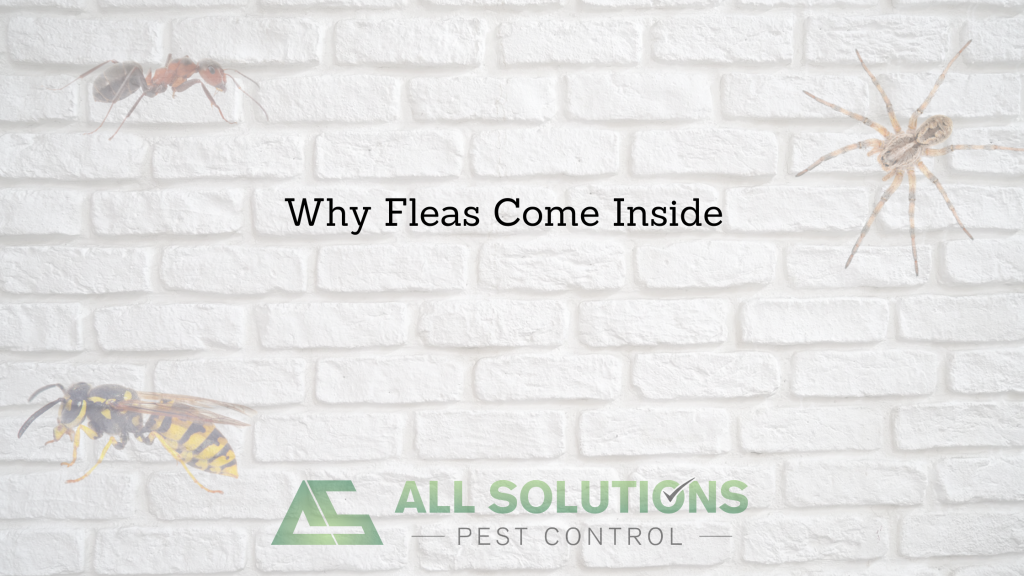Fleas. Just the word can send shivers down the spine of pet owners and homeowners alike. Because these tiny, irritating pests can quickly turn a comfortable home into an itchy nightmare. But why do fleas come inside in the first place? Understanding their motivations is key to preventing infestations and keeping your home flea-free.
The Flea’s Motivation: Survival and Sustenance
So fleas are primarily driven by two things: finding a host for food and seeking a suitable environment to reproduce. Here’s a breakdown of why they might choose your home:
- Your Pets: So our furry friends are the most common culprits. Dogs and cats can pick up fleas outdoors, bringing them inside where they can infest carpets, furniture, and bedding.
- Wildlife: Wild animals like rodents, squirrels, and even raccoons can carry fleas. Because if these animals frequent your yard or crawl spaces, they can introduce fleas to your property, eventually making their way inside.
- Human Carriers: While less common, humans can also inadvertently transport fleas indoors. So fleas can hitch a ride on clothing, shoes, or even in bags.
- Seeking Shelter: Fleas prefer warm, humid environments. During extreme weather conditions, they may seek refuge indoors, where the temperature is more stable.
- Favorable Breeding Grounds: Carpets, rugs, and upholstered furniture provide ideal breeding grounds for fleas. The fibers offer protection for eggs, larvae, and pupae.
Identifying a Flea Infestation:
Early detection is crucial for controlling fleas. So keep an eye out for these signs:
- Excessive Scratching: Pets that are constantly scratching, biting, or licking may have fleas.
- Visible Fleas: Adult fleas are small, wingless insects that are reddish-brown in color. They move quickly and can be difficult to spot.
- Flea Dirt: This is flea feces, which looks like small black specks. It’s often found on the pet’s fur or bedding.
- Itchy Bites: Flea bites on humans are small, red, and incredibly itchy. And they often appear around the ankles and legs.
Preventing Flea Infestations:
Prevention is the best defense against fleas. Here are some proactive measures:
- Flea Treatment for Pets: Regularly administer flea medication to your pets, as recommended by your veterinarian. This is the most important step in preventing flea infestations.
- Yard Maintenance: Keep your lawn trimmed and remove debris where fleas might thrive.
- Vacuum Regularly: Vacuum carpets, rugs, and upholstery frequently, paying attention to areas where pets spend the most time. Dispose of the vacuum bag immediately after use.
- Wash Bedding: Wash pet bedding, blankets, and even your own bedding in hot water and dry on high heat to kill fleas and their eggs.
- Seal Entry Points: Check for cracks and openings in your home’s foundation and seal them to prevent wildlife from entering.
Treating a Flea Infestation:
And if you already have a flea infestation, you’ll need to take steps to eliminate them:
- Professional Pest Control: So for severe infestations, it’s best to contact a professional pest control service. They have the expertise and tools to effectively treat your home and yard.
- DIY Treatments: Several over-the-counter flea treatments are available, including sprays, powders, and foggers. And please follow the instructions carefully and choose products that are safe for your family and pets.
- Targeted Cleaning: Focus on cleaning areas where your pets spend the most time. This includes washing bedding, vacuuming thoroughly, and even steam cleaning carpets.
Reclaiming Your Flea-Free Home:
Dealing with fleas can be frustrating, but it’s not impossible. So by understanding why they come inside and taking preventative measures, you can create a less hospitable environment for these pesky pests and enjoy a comfortable, itch-free home. Don’t let fleas take over – take control today!
